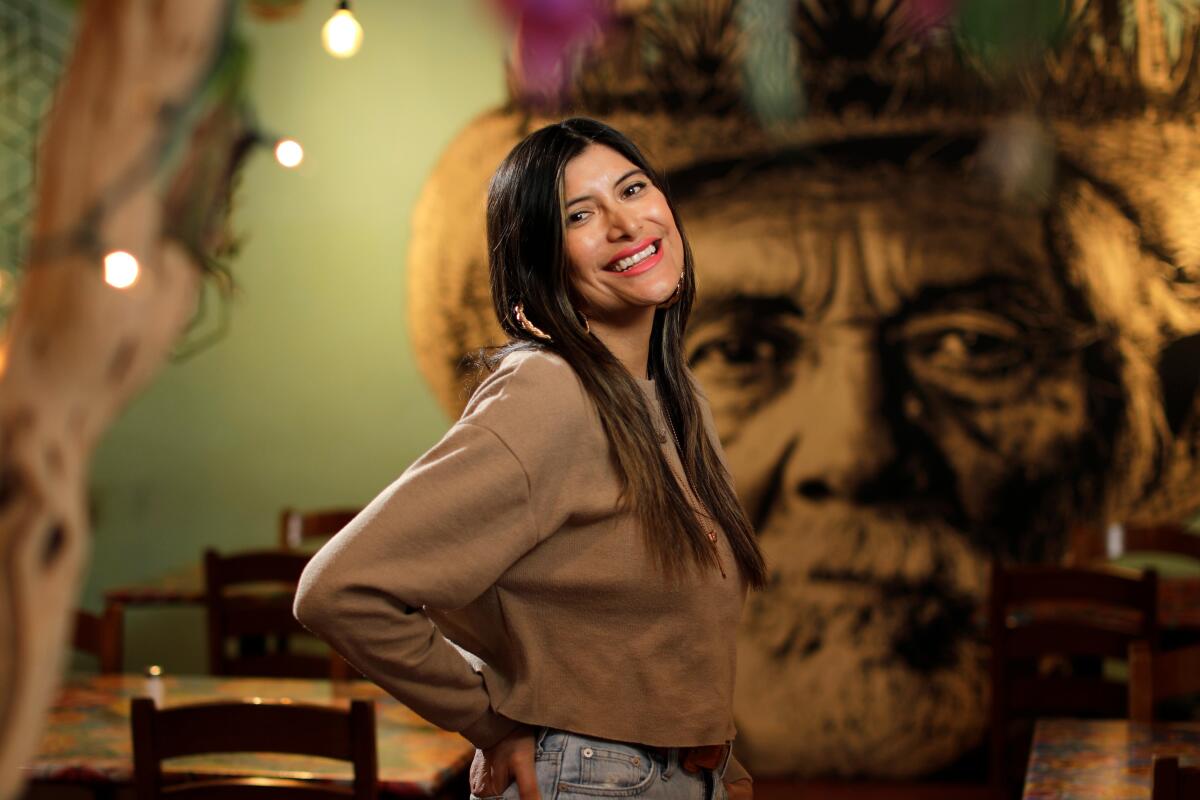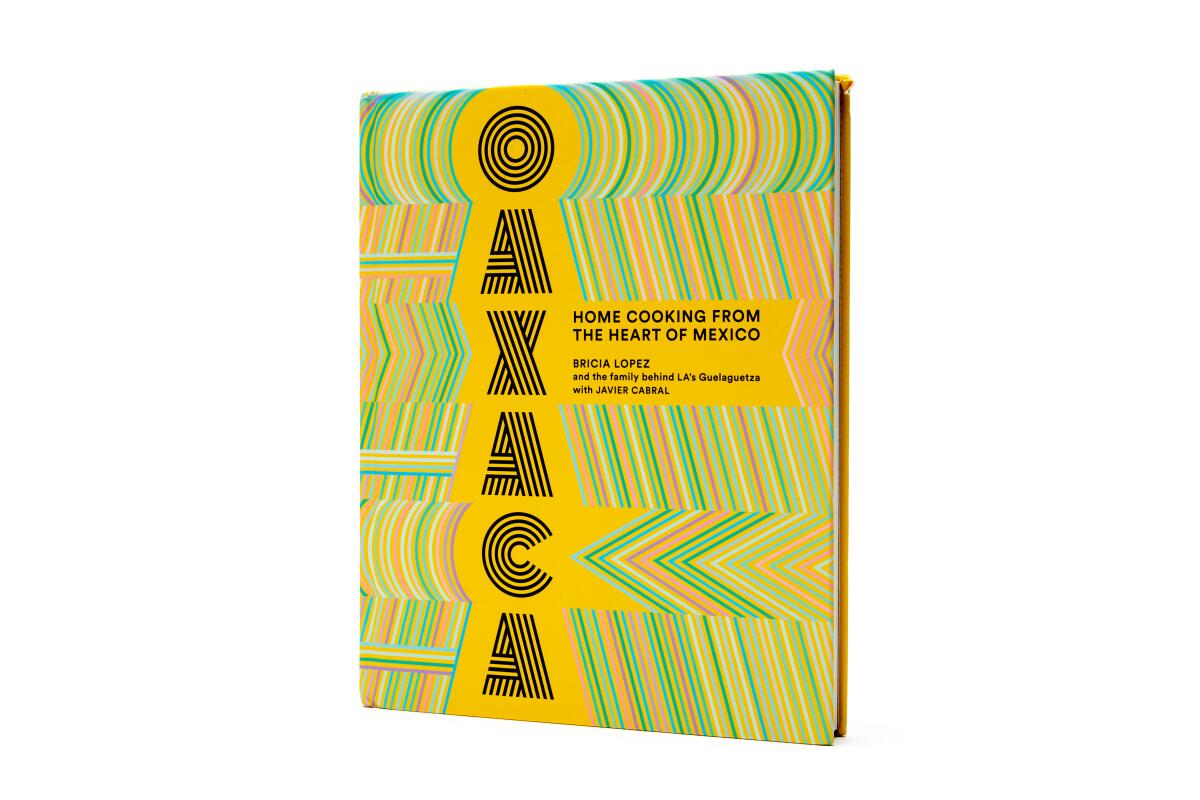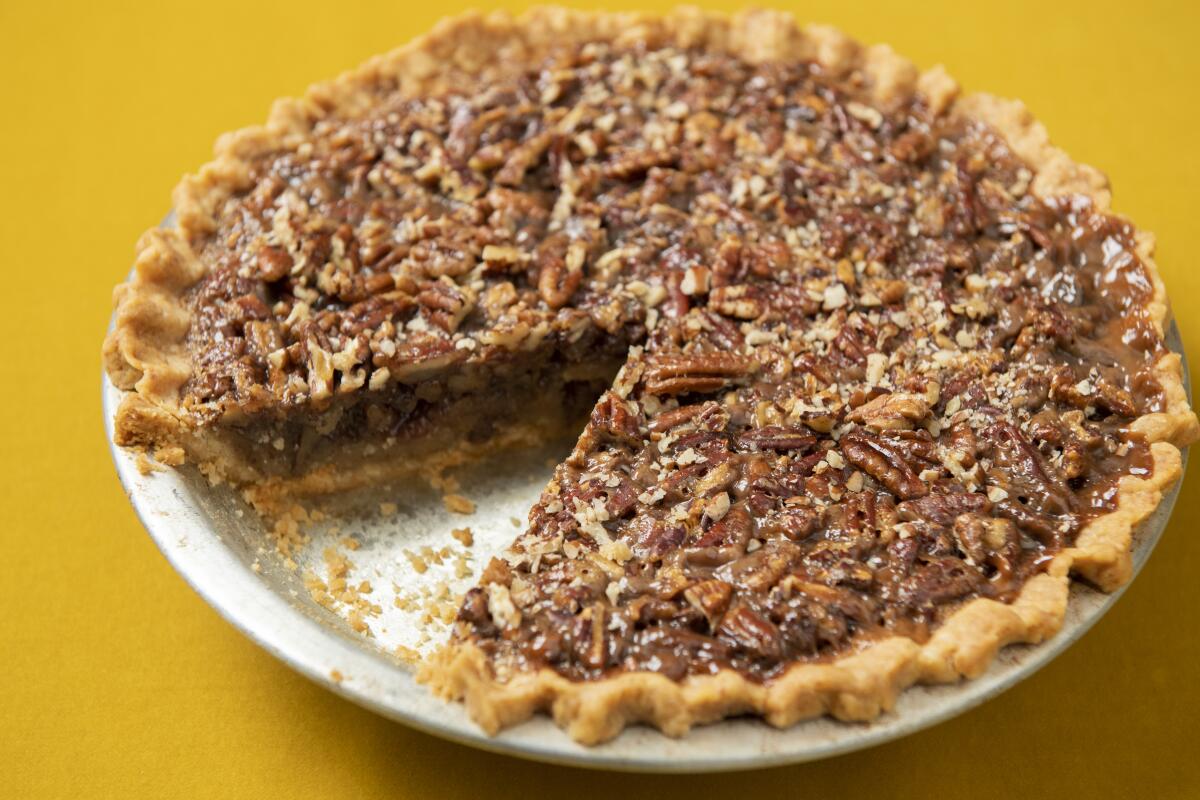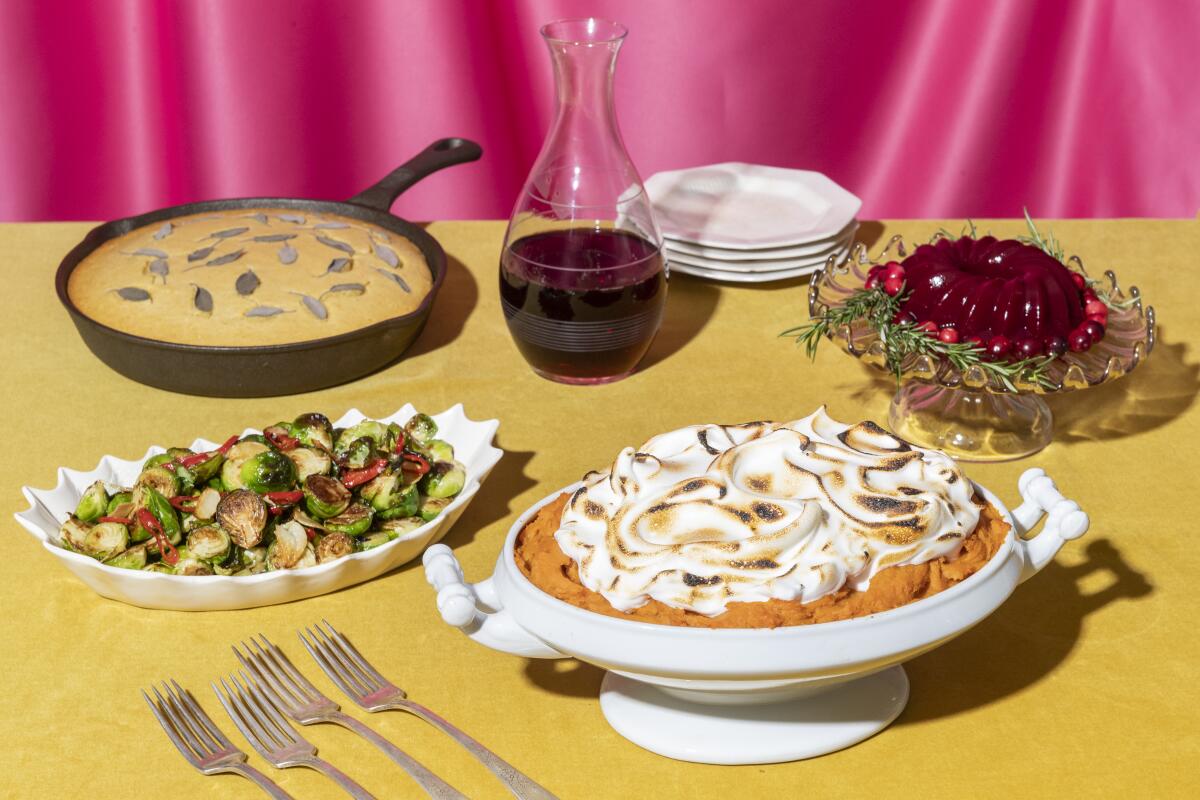Newsletter: Bricia Lopez on writing the Guelaguetza cookbook and telling her family’s story

- Share via
What are your Thanksgiving plans next week? I’m headed to Riverside for a family potluck that will probably conclude with my uncles doing tequila shots on the patio as they sing ranchera songs slightly off-key. I wouldn’t have it any other way.
Eat your way across L.A.
Get our weekly Tasting Notes newsletter for reviews, news and more.
You may occasionally receive promotional content from the Los Angeles Times.
My husband and I are in charge of bringing a side dish, so I plan on consulting cooking editor Genevieve Ko’s “plantsgiving” menu for inspiration this weekend (check out that beautiful cornbread). I’m tempted to also break out the chicken schmaltz and make Ben Mims’ Nashville hot pumpkin pie.
I’m also hoping to catch up on reading over the holiday weekend — especially the crop of new fall cookbooks. One of my new favorites is “Oaxaca: Home Cooking From the Heart of Mexico,” written by Bricia Lopez with writer Javier Cabral, with input from all of Bricia’s family.
The Lopez family in 1994 founded Guelaguetza, the legendary Mexican restaurant in Koreatown that has become the center of Oaxacan cultural life in Los Angeles. The cookbook includes recipes for signature dishes like tamales de mole negro and its fruity pink horchata. It’s also a poignant account of how the Lopez family came to Los Angeles, and a tribute to the singular culinary traditions of Oaxaca.
I talked to Bricia by phone recently about how the cookbook came together, her thoughts on mezcal, and why she and her siblings, Fernando, Elizabeth and Paulina, decided to take over the restaurant after their parents retired.

Whose idea was it to write the cookbook and how did the project come together?
The idea of having a cookbook was always in the air. Then a book agent reached out; he really was the one who was kind of pushing it forward a little bit. We needed to seek out a writing partner and that took a couple of years until we decided to go with Javier, who we’d been friends with for about 10 years.
The book feels more personal than many cookbooks.
All of us got together and figured out what we wanted to do, which was to put the family story first. The book is really a representation of who we are as a family. We’ve been always championing Oaxaca and our heritage and food through the restaurant. I think you can’t tell our story without understanding where we come from.
Can you tell us a little bit about how you picked the recipes?
A lot of the recipes are my mom’s or grandma’s recipes. We selected 120 recipes and I think 110 made the final book. We wanted to demystify this idea that it takes days to make mole and it’s so difficult to make. It can be off-putting. We wanted to simplify everything and really push the idea of cooking Oaxacan meals at home.
You write honestly about growing up in the family business. There was a time when you and your siblings didn’t really see yourselves keeping the restaurant going. Then, in 2013, your parents retired to Oaxaca.
When my dad decided to retire, he was going to sell the restaurant. I was faced with the reality that all my dad’s hard work was going to be forgotten. You know, that his legacy was going to be gone. And that idea of losing it all, the years of hard work and dedication and sacrifice. It just seemed impossible for me to believe that that was going to happen. It was kind of like an instinct and we thought, ‘We’re gonna make this work.’ So we did. We worked really, really hard. The restaurant was in a lot of debt. We just figured it out.
Your family started Guelaguetza at a time when not many people in the United States knew about mezcal.
Our restaurant was always catering to people from Oaxaca, so for us it was just kind of natural. My dad made mezcal when we lived in Oaxaca. That was his business. There were very few brands that we could bring back then. It’s crazy how many brands there are now.
What I really love about mezcal and what I think a lot of people end up forgetting is that it’s a drink made by farmers. I spoke to a mezcal maker and he was telling me that he doesn’t like these fancy mezcal titles like “maestro mezcalero.” He said, “I’m a farmer.” I think people forget that. You cannot be a mezcal maker without being a farmer.
In the book you write that your dad came to L.A. on a tourist visa with “a suitcase full of clothes, 20 liters of mezcal and a hundred American dollars.” At one point your family of six had to share one spare bedroom in your aunt’s Culver City apartment. Do you think L.A. is still a city where a success story like Guelaguetza can happen?
If you have a dream, if you want to come, this is definitely a place where there’s so much opportunity. There are so many languages spoken here. There are so many different communities here. It’s a very diverse city and a very open-minded city too. Those are the things that make it possible. It’s just the way my dad did it. A lot of work and dedication and not giving up ever.
It feels like so many cookbooks about Mexican cuisine are written by non-Mexicans. Was that something you thought about when you were writing this book with Javier?
It’s just our story, so that’s not something I dwelled on.
But I do think maybe that’s why the food from Oaxaca has been thought of as being difficult. I think stuff before has been written almost from an anthropological point of view, like “Oh, look at these people. They eat like this, and they eat like that.” And so it was never written from our point of view. We’re just people and this is our story. We’re not exotic. I think it helps people understand Oaxaca and the different regions of Mexico. I think it’s very important to have people tell their stories from their point of view and not have someone else validate us that way.

Ask the critics
Pumpkin or pecan pie for Thanksgiving?
— Evan S., Twitter
If I had to choose, I’ll go pecan pie, because I’m a sucker for the combination of chopped nuts and sticky-sweet custard filling. It’s true that pecan pie can be cloyingly sweet, thanks to the lavish amounts of corn syrup called for in some recipes.
Genevieve Ko has a new recipe for a bourbon pecan pie with a no-roll crust that uses no butter and only a modest amount of dark corn syrup. The hack: canned coconut water lends richness. Let us know if you make it (and maybe save us a slice).

Top stories
- Need a Thanksgiving dinner ice breaker? Lucas Kwan Peterson’s Official Thanksgiving food power rankings are the debate fodder you need.
- Also from Lucas: Episode 6 of “Off Menu” takes us to a tiny Armenian restaurant in Glendale serving some of the city’s best beef and chicken kebabs.
- Contributor Austin Bush explores the nutmeg obsession in Penang, Malaysia.
- Hadley Tomicki has the rundown on new restaurant openings in L.A.
- Did you see the video of Jenn Harris, Lauren Lee and Cody Long taste-testing pumpkin spice everything? Watch them try seasonal delicacies like pumpkin spice Spam.
More to Read
Eat your way across L.A.
Get our weekly Tasting Notes newsletter for reviews, news and more.
You may occasionally receive promotional content from the Los Angeles Times.









